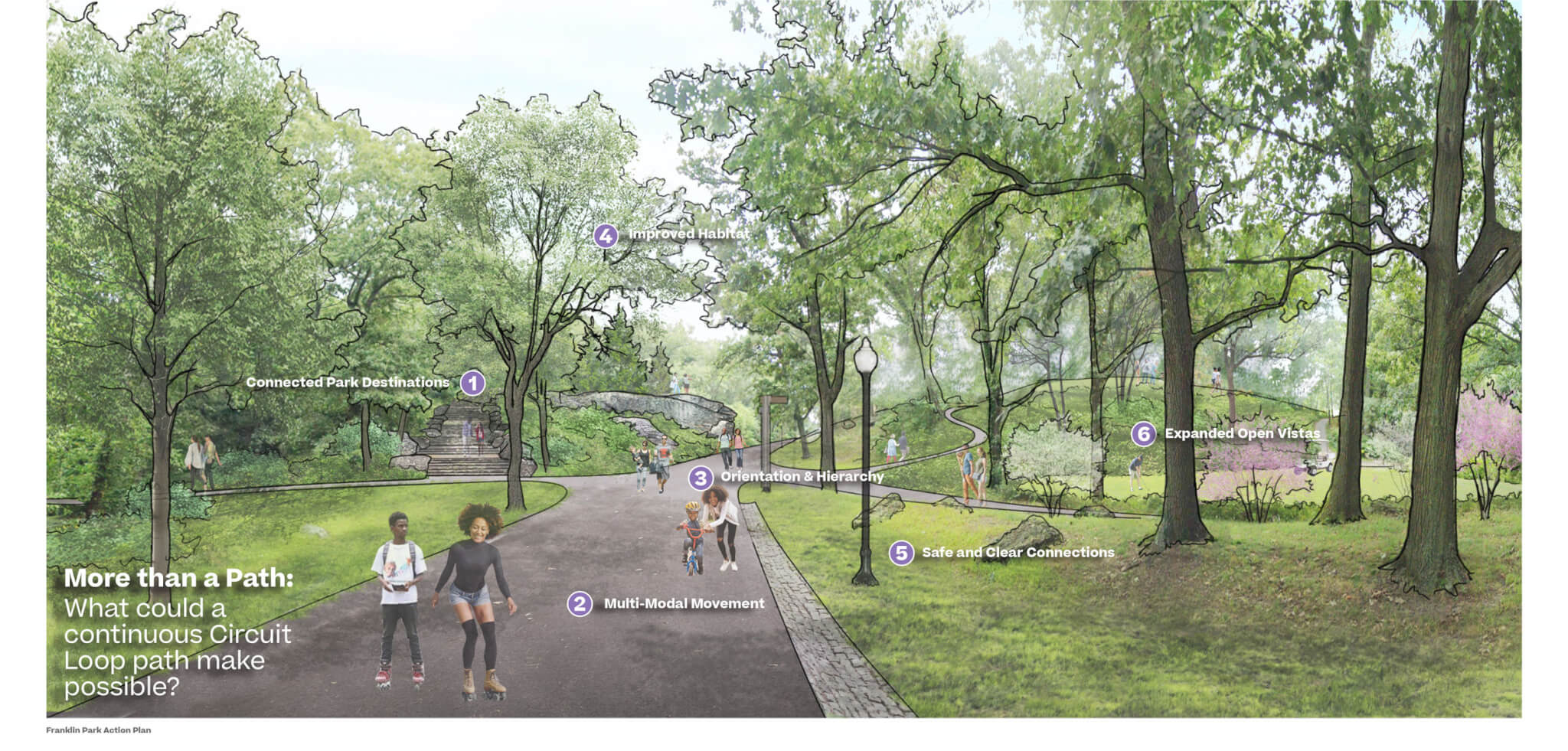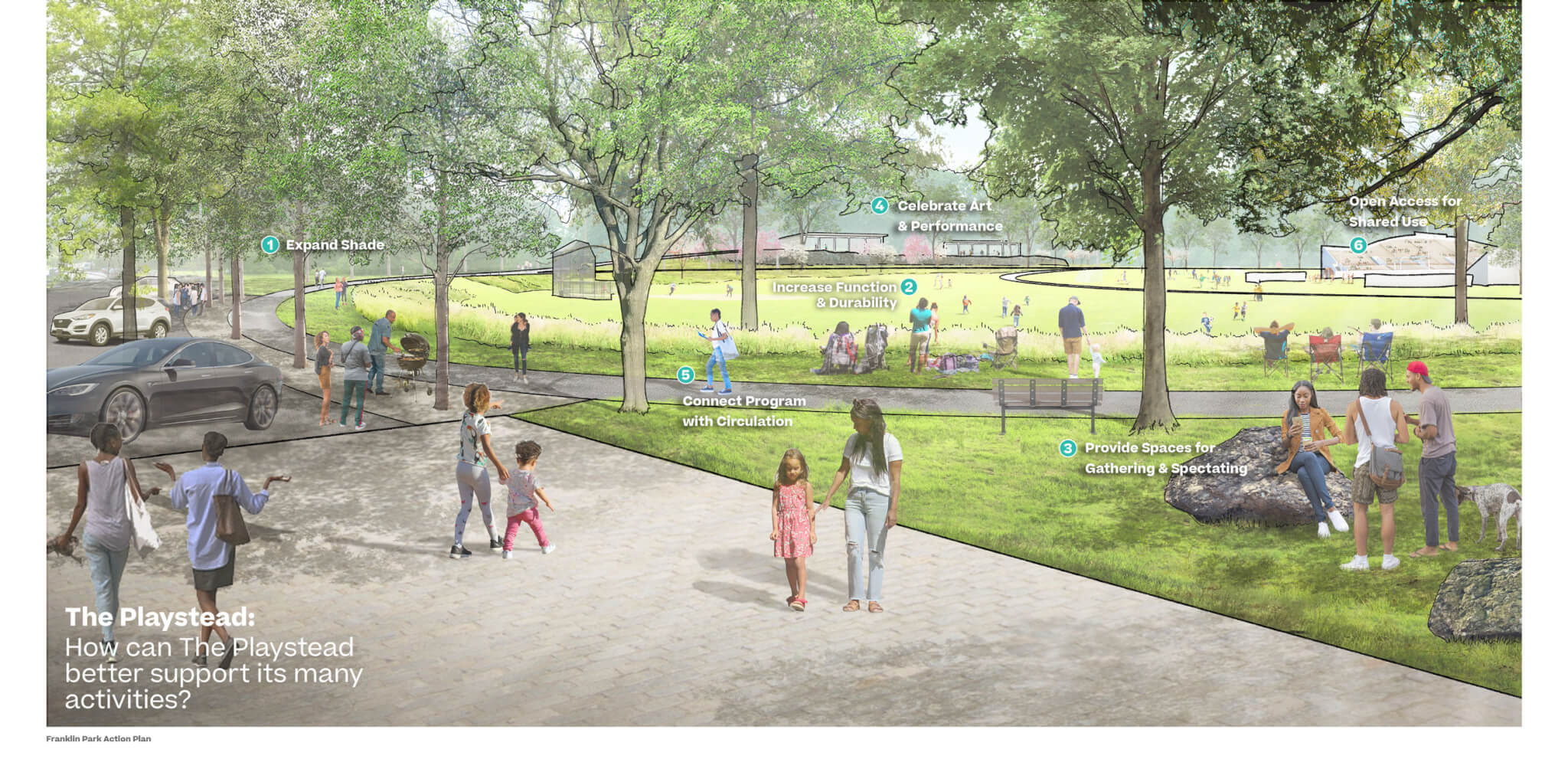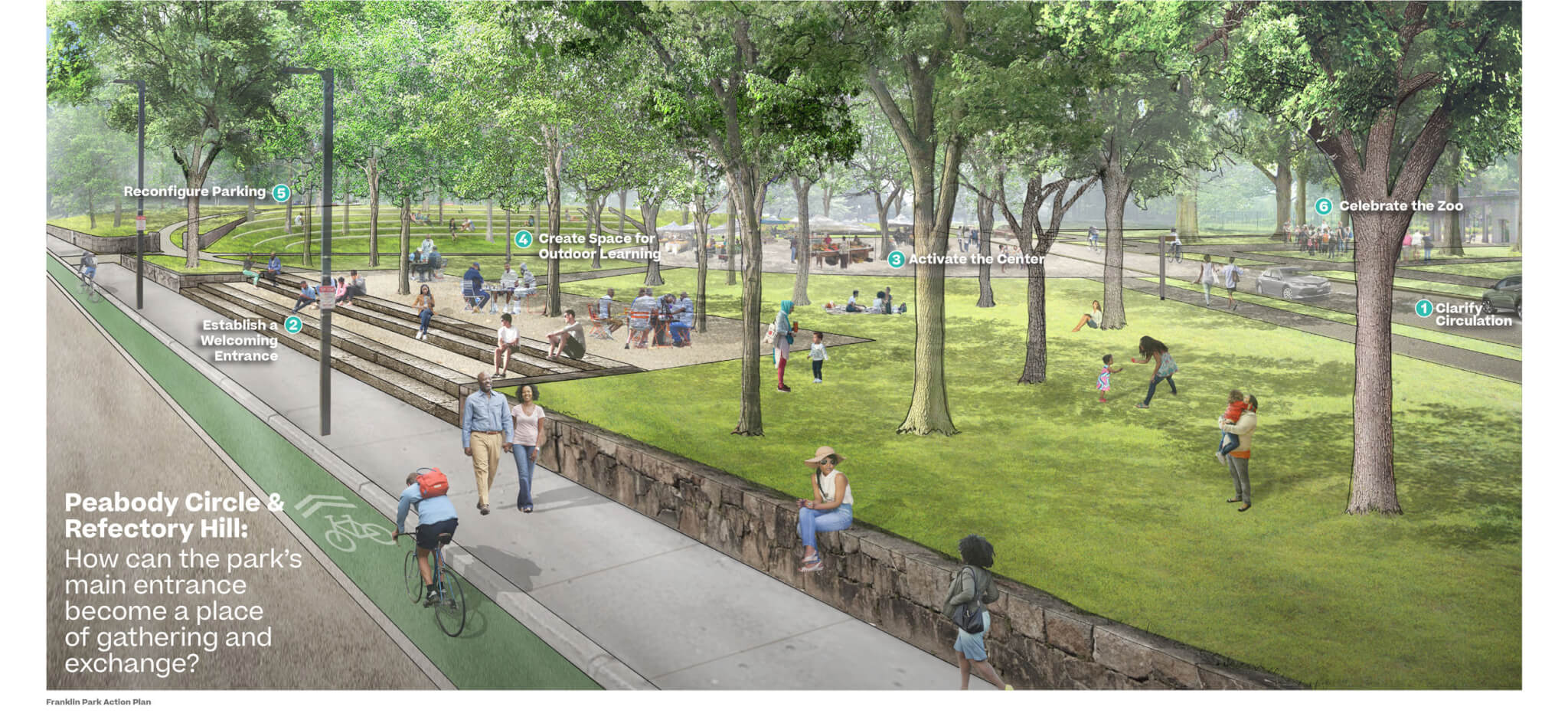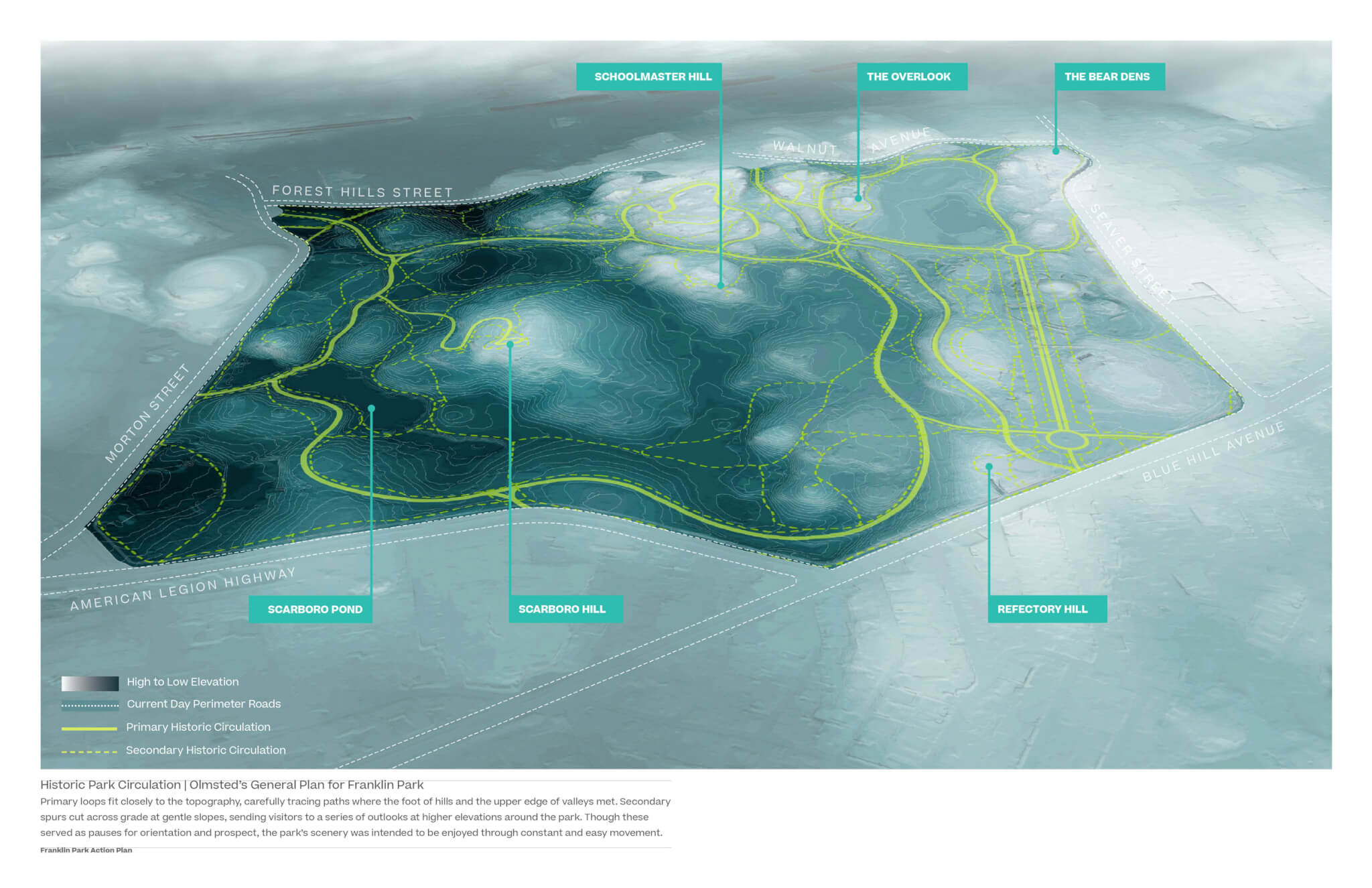A main node in the Frederick Law Olmsted, Sr.–designed park system will be treated to an exhaustive overhaul. Today Boston Mayor Michelle Wu announced the Franklin Park Action Plan, an initiative to restore the city’s largest park, which is part of the Emerald Necklace, a historic series of parks that snake around the city from Franklin Park to Boston Common.
Franklin Park is considered Olmsted’s greatest designs, alongside New York’s Central Park and Prospect Park. Roughly sandwiched between the neighborhoods of Dorchester, Jamaica Plain, Mattapan, and Roxbury, the park’s 527 acres include a zoo and golf course. The just-revealed Action Plan targets roughly half of the space, but excludes the zoo, golf course, and other facilities.
Planning for the Franklin Park Action Plan has been a three-year-long undertaking that involved meeting with community stakeholders to identify projects and areas of improvement around the park. Fundraising to revamp Franklin Park began in 2018 with the establishment of a maintenance trust and an additional $23 million from capital investment for a total of $28 million to fund renovations and continued maintenance. As part of the makeover, the city plans to restore buildings across the site, as well as improve pathways for pedestrians and bikers while creating new spaces for cultural and ecological activities. Reed Hilderbrand, Agency Landscape + Planning, and MASS Design Group have work alongside the City of Boston Parks and Recreation Department and several community organizations to realize the project thus far.

The entire plan is outlined in a comprehensive 230-page document and will enter a public comment period that will run through February 10, 2023. In October, the city released a master plan outlining recommendations for a nearby Boston landscape landmark: the Boston Common, said to be the oldest park in the United States.
“Franklin Park is a treasured green space for our Boston residents and has played a crucial part in bringing our communities and neighborhoods together across generations,” said Mayor Wu in statement. “With this Action Plan, residents and park users will have the opportunity to help the City shape the future of the park and to create a roadmap for preservation, maintenance, and public use of Olmsted’s historic landscape.”
Olmsted, who would have celebrated his 200th birthday this year, set the bar for how to integrate landscape into the urban realm. Franklin Park epitomizes his firm’s pastoral approach. The former farmland turned park opened in the late 19th century as a serene landscape that amplified idyllic New England vistas and promoted civic and community engagement. Olmsted’s firm’s original vision for the urban green space was never fully realized, however. Later on, lack of funding, changing ownership, and alterations and additions to the surrounding area— including the construction of Circuit Drive, White Stadium, and Shattuck Hospital—divided and shrunk the park.

Among the proposed improvements for the Olmstedian landscape are the restoration and adaptation of the old Bear Dens, a masonry structure previously used in the zoo’s bear habitat. Today, despite its somewhat ruinous condition, the stone construction provides myriad opportunities for recreational use. The former location of watering holes used by the animals can be adapted into splash and swimming ponds for park visitors, while existing stone walls form seating opportunities.
The master plan also proposes bringing back the Elma Lewis Playhouse to its original location. The stage was located within the Overlook Shelter, the only building Olmsted ever designed. It was in use during the 1960s and 1970s, but now operates from a temporary location. Plans to return the performance venue to its original home will involve restoring its puddingstone frame and other architectural elements, clearing overgrowth, and providing accessible access to the site.

The Playstead, an area of the park comprising the Bear Dens, the location of the former theater, playing fields, and grassy open space is in need of seating, shading, and sharing places where the public can gather for fun activities. To increase circulation and functionality in this area, existing barriers such as fences would come down and new pathways and benches would be designed and erected.
A new “front porch” for the park could be established at Peabody Circle, on the Dorchester side. The plan proposes the addition of a series of steps that would double as seating.
The focus is not just centered on the park’s cultural and historic spaces. Access to open space and public health are also priorities. Across the site circulation will be improved, with upgraded trails, new seating, and more entry points for visitors coming by foot. Proposed work will also make improvements to lighting, drainage and signage.

As for the land itself, years, or in some cases decades, of overgrowth will be removed, invasive species curtailed, and new native plantings and trees will be brought to the site.
“We rediscovered Franklin Park through the memories and voices of the community,” said John Kett, managing principal of Reed Hilderbrand. “We have always understood this place to be of cultural consequence, because of the Olmsted legacy. But there’s more to this place, more stories, more experiences—Franklin Park has meant so much to Bostonians. The Action Plan recognizes them and seeks to follow their lead in guiding future investments to bring the park into the twenty-first century.”











